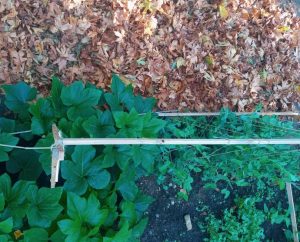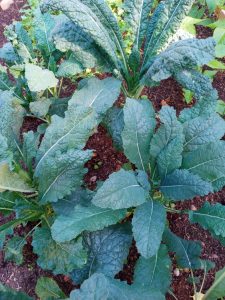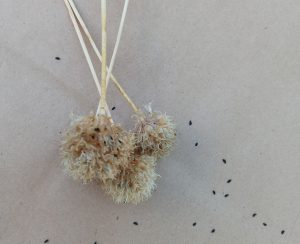Many of our Thurston County gardens will experience their first winter soon, and fall is the time to start preparing them for the long haul. Getting ready for the next planting season begins even now with soil protection, tending of annuals, and planning for next spring’s plants. Whether this was your first garden or fiftieth, end of season routines matter. A few preparations this fall will help keep the momentum rolling from year one into year two.
 Soil Care
Soil Care
Healthy soil lays the groundwork for healthy plants, so this means adequate aeration and hydration. Microorganisms need enough air and water to be able to complete their scientific magic of turning out the right chemical nutrients. Maybe you broke ground and tilled a new plot, or maybe you built raised boxes. Either way, your soil needs to be tucked in for the winter so it can stay in good condition. Thurston county averages 50 inches of rain yearly, more as you get closer to the foothills. This water will pound its fists down on your soil and compact what you so lovingly hauled across town, shoveled or rototilled.
“The most important thing in my opinion,” says Cisco Morris, master gardener, certified horticulturist and author of “Oh La La,” “is to do something to improve the soil over winter. There are two ways you can do that. One is to grow a cover crop that you can work into the soil in spring. That will add nutrition and protect the soil from becoming compacted by the beating of the constant rain on the soil surface. Otherwise, cover the soil with about two inches thick of quality compost. The cover again prevents compaction by the rain, and the nutrients in the compost are washed down into the soil by the rain. Then in spring when it’s time to plant, you can work the compost in or simply plant starts through the compost.”

Mulch is the winter blanket that can protect your soil through the cool, wet season. Choices vary from purchasing a nice mulch mix or creating mulch from certain yard debris. Are maples, alders and birch waiting to rain down thousands of leaves upon your yard? Bingo! A four to six-inch layer of leaves and fern fronds or shredded corn stalks can be a mulch that provides insulation from cold snaps, protects soil from heavy rain and suppresses weeds.
Full sized leaves take longer than broken leaves to break down and decay. However, if you know you want them to break down more quickly, they have to be chopped up. “To speed things along, fill a plastic garbage can with dry leaves and, using a strong trimmer like a stick blender, whirl them to a finely chopped texture,” suggest Lorene Edwards Forkner in “Vegetable Gardening in the Pacific Northwest.” Leaves will break down eventually, but shredding accelerates the process. If wind is a concern, laying a tarp down or laying cardboard weighted with rocks will help keep your leaf mulch from blowing away. Using fallen leaves might be a great solution when you find yourself asking what will be done with all that needs to be raked into piles anyway.
Cover Crops and Winter Plantings

Growing a cover crop is another way of both protecting and preparing soil for next spring. Though the method is typically one used with more acreage and a sizeable tractor, cover crops can be grown on the smaller, home garden scale. The purpose is the same. When crops are planted later in September, they have time to establish some roots to grab into the soil and grow enough leaves that can block falling rain drops. Types of clover and peas, rye and arugula are common choices. Onions, garlic, and purple sprouting broccoli are also just some of the many edible crops. Kale is another that serves a dual purpose of hardy cover crop as well as a popular green in the kitchen. Mulching around these crops is still a good idea as it provides protection from cold spells and small, hungry pests.
Evaluating for Next Spring

With some confidence that your garden bed will be tucked in snug and safe, you can start planning for round two. Consider your experiences from this season. What will you plant again or as a new item? Check your plants as they wind down. Are there diseased leaves to prevent from going into the compost? Consider which of this season’s plants can provide you with seeds to use later. Are there viable seeds on the plant? Each plant type requires a variation in how its seeds are harvested and preserved, and different seeds have varying shelf lives, sometimes years long.
If your garden is facing its first winter, attention to keeping your soil aerated and hydrated will make it a welcoming atmosphere for seeds and seedlings. Come spring, we first time gardeners will want them to be ready for round two.
















































